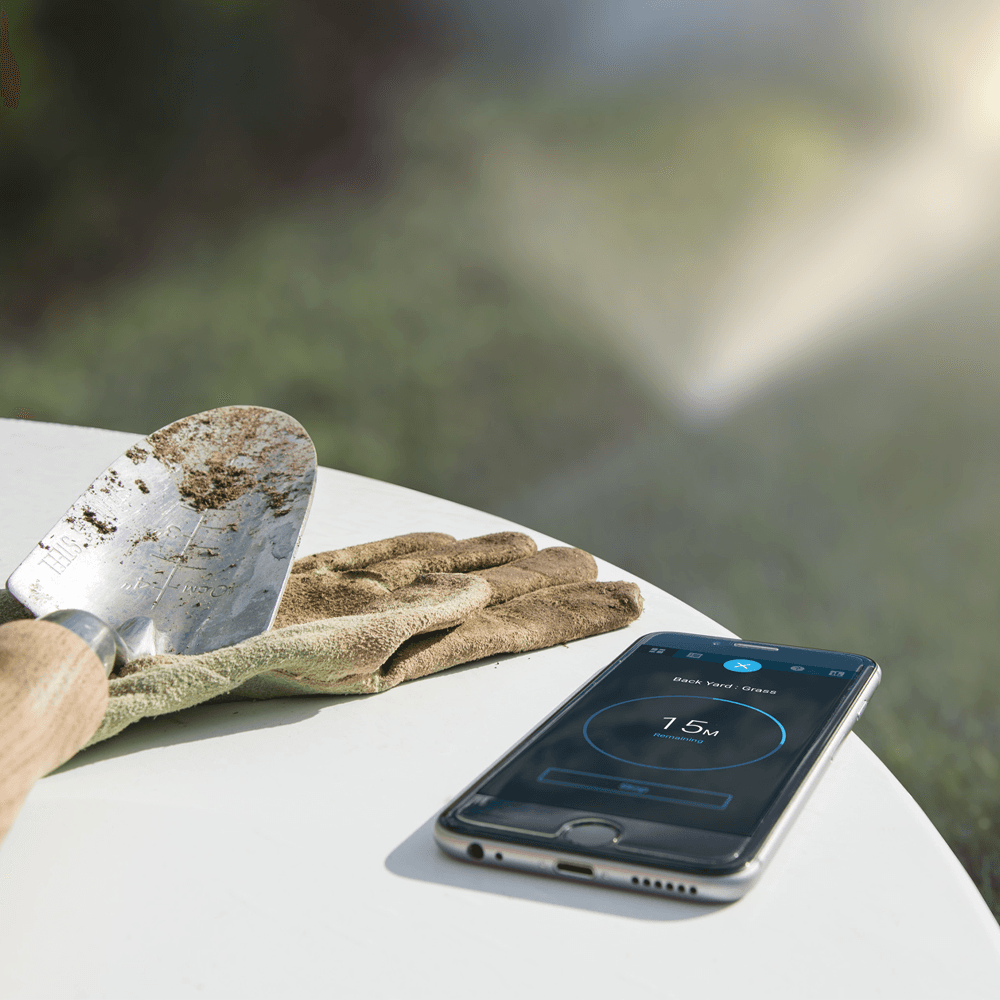AMWUA Blog
BY: AMWUA StaffOptimize your watering to ensure your landscape remains healthy and waterwise

It’s summer, and the weather is hot, typically increasing water use, especially outdoors. While we often think more water is needed, especially with escalating temperatures, that is not always the case.
July is Smart Irrigation Month , which is a perfect time to transform your outdoor watering habits by making simple changes to achieve efficient and effective watering (and save money) this summer.
Watering
Slow the flow. You want to water slowly and deeply to ensure the moisture reaches the roots of your plants. If water is applied too quickly, it won’t absorb and will run into unwanted places in your yard. If you water deeply, you do not have to water as frequently. Proper watering is essential in our arid climate because the heat and wind quickly dry the soil's surface.
When watering correctly - deeply and not as frequently - even your thirstiest plants, like grass, should be watered no more than twice a week. Established trees and shrubs need to be watered only once every other week. And desert-adapted plants need even less. However, if you notice some of your plants are struggling during periods of extreme heat, they can be supplemented with some extra water.
Most people tend to overwater their entire landscapes, including low-water-use plants, which encourages excessive growth of diseases and other maintenance problems. Deep, infrequent watering encourages robust, healthy root systems that can better tolerate intense heat and periods of drought.
Watering at the ideal time is vital to achieving water efficiency in the hottest months. Make sure you don’t water when it’s windy when that precious water will blow away or evaporate. When it rains, give your irrigation system a break for a few days, but if you have a smart irrigation timer, it will adjust for you. Finally, make sure you are not watering during the sunniest and hottest hours of the day when water will simply evaporate; instead, aim to water early in the morning- one to three hours before sunrise.
In addition to optimizing your watering, ensuring your irrigation system operates as it should is also key. Here are a few basic guidelines to keep your irrigation system running correctly, which, in the end, will save you time, water, and money.
Drip System
Drip systems are always a work in progress and need to be checked and maintained regularly. A consistent maintenance schedule will identify issues such as underground pipes that can crack and leak, tubes leading to plants that were cut by tools or simply broke due to age, and emitters that can fall off or get clogged with dirt.
It's also important to look at your emitters because many are commonly used on drip systems that don't control pressure. Plants closer to the irrigation valve or at the bottom of a slope get overwatered from a heavier flow. Other plants may start looking weary because they are getting too little water or the water is running off too quickly to be absorbed. A typical response is to overwater the entire yard, which will not adequately address the issue. Instead, look for inexpensive "pressure compensating emitters." These will also slow the flow rate, so the water sinks deep into the root.
Sprinkler System
If sprinkler heads are not appropriately spaced, overwatering and even underwatering can occur, leaving yellow patches and uneven growth. To maximize your sprinkler system's efficiency, ensure the heads are spaced correctly, and don't forget to put sprinkler heads in the corners of your yard to keep grass evenly green.
The most efficient sprinkler nozzle is called a "stream rotor nozzle." Instead of a single stream of water, these sprinkler nozzles use multiple fingers of water. They cover the area evenly, and their reach is more flexible. If you inherited a poorly spaced sprinkler system, installing these nozzles could extend a sprinkler's reach and restore the health of yellow patches without overwatering the rest of the turf or rearranging the heads.
Control Box
The efficiency of an automated control box depends on the operator. It saves water if the person who sets the timer understands the needs of the plants and trees in each zone. It is also important to remember that plant watering needs vary monthly. Regularly adjusting your irrigation schedule is an easy way to save water and money and helps ensure your plants get the right amount of water to thrive. Irrigation frequency should be adjusted at least four times yearly to account for differences in seasonal watering needs. If you need help understanding how to program your controller correctly, you can also rely on a landscape or irrigation professional .
Many municipalities have rebates for smart irrigation controllers and workshops on irrigation systems, so visit your local water conservation office to learn more.
With a better understanding of how to be smart with your irrigation, you can keep your landscape healthy while ensuring you are efficient with your outdoor water use, even with the scorching summer temperatures. The bottom line is you can keep it simple – water correctly, and your landscape can thrive with much less water.
For more information on outdoor watering, check out this interactive watering guide created specifically for the Phoenix metro area and its unique conditions. This watering guide walks you through how much and how often to water and shows you how to set your irrigation timer, troubleshoot your system, and many other tips about outdoor watering.
For additional resources and information, visit our conservation pages .
For 55 years, the Arizona Municipal Water Users Association has helped protect our member cities' ability to provide their communities with assured, safe, and sustainable water supplies. For more information, visit www.amwua.org .
